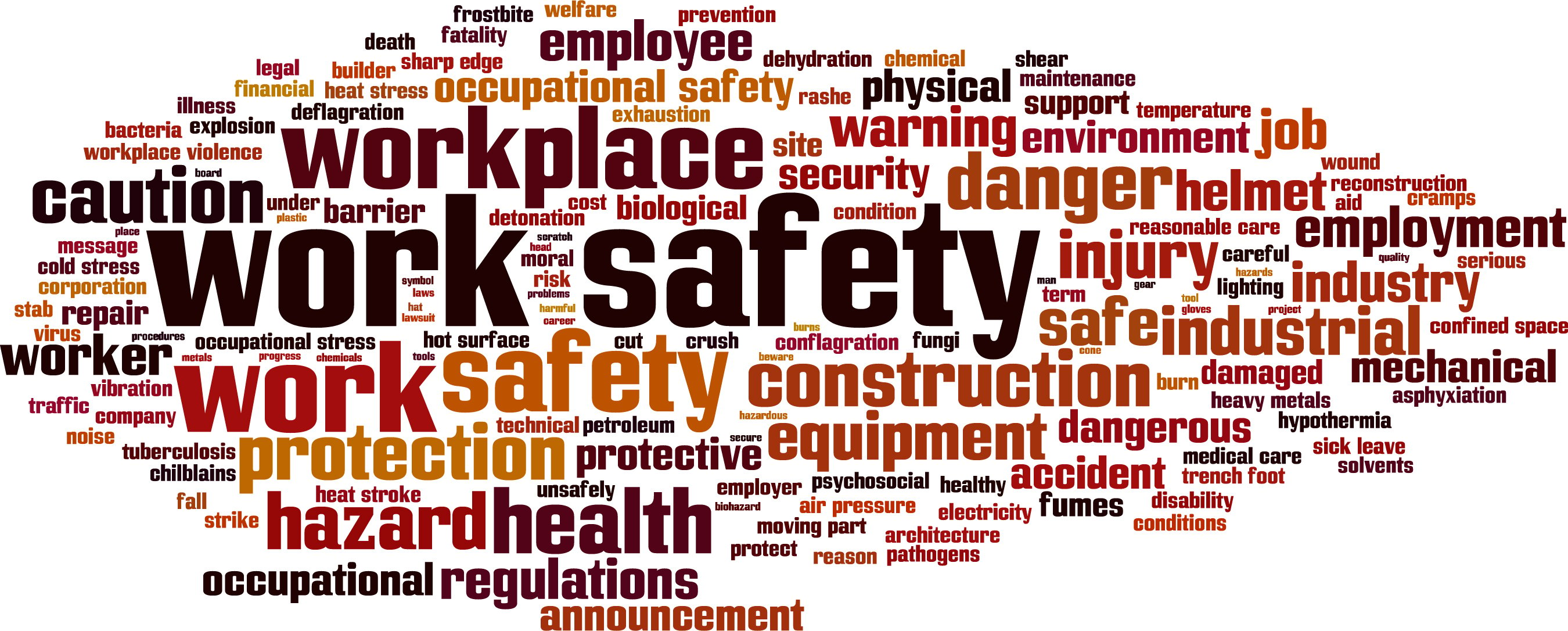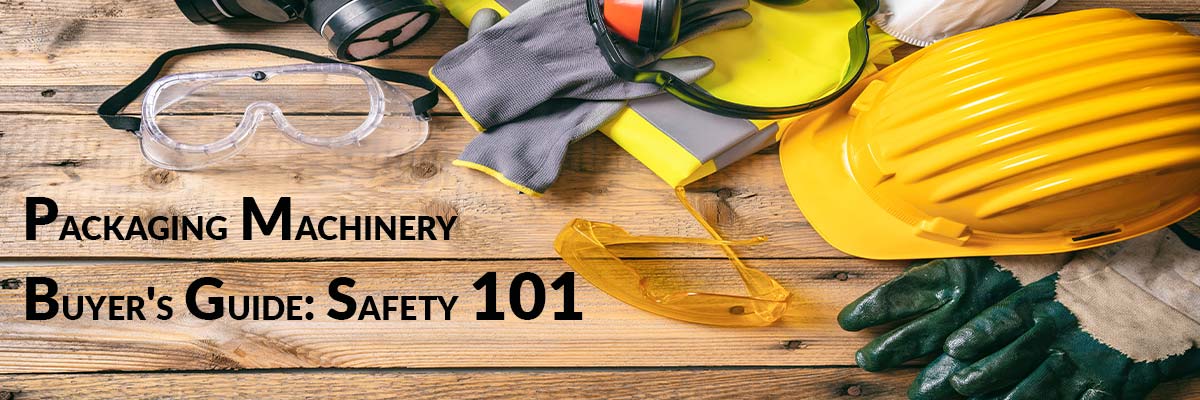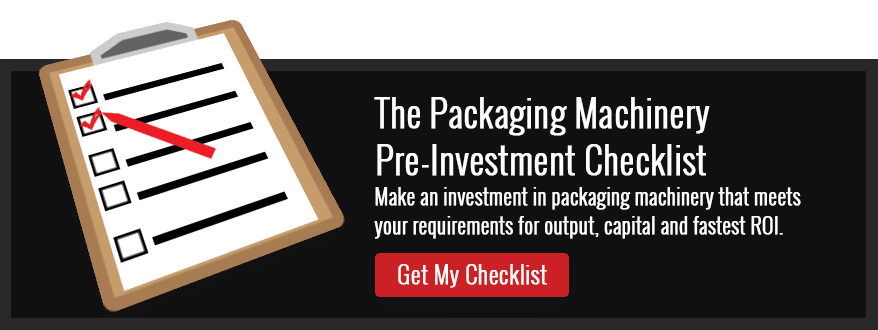Packaging Machinery Buyer's Guide: Safety 101
When thinking about purchasing a new piece of packaging equipment, it is important to start with safety first. Packaging machinery is heavy-duty professional equipment. As such, ensuring that your employees are well trained on the machinery starts with a solid understanding of how to run the equipment safely. But when it comes to safety in regards to packaging machinery, where do you start?
Packaging Machinery Safety

When beginning to educate yourself on the safety concerns surrounding packaging machinery, it is wise to request safety information from your vendor. Obtaining the appropriate safety documentation for each make and model that you will be purchasing is also advised.
According to the American National Standards Institute, a risk assessment is a necessary process to ensure the safety of your employees.
A risk assessment is a collection of logical procedures intended to carefully examine any hazards with the packaging machinery's use and operation.
The main purpose of a risk assessment is to realize hazards, assess and reduce risk and provide documentation that validates the results of said assessment.
Below, we will explore the seven steps of a risk assessment as outlined by the American National Standards Institute and explain each of them in detail.

The Seven Steps Of A Packaging Machinery Risk Assessment
- Prepare for and set limits for the assessment
When starting out on a new assessment, you will want to consider what factors are most important. Take some time to figure out what the main areas of concern your assessment will focus upon.
Meditate on which dynamics of your packaging line are most important in regards to the safety of your employees. If you are using collaborative robots in your packaging line, your assessment will likely look different from a line that does not utilize them.
- Identify tasks and hazards
The size of your packaging line, the types of equipment you are going to use, and how often your machines will be running are a few of the things you will want to consider when ensuring a safe working environment for your employees.
Make a list of each task and research the hazards of each. Work with your vendor to get the proper training for your employees and be sure that they put an emphasis on safety first.
- Assess initial risk
Once you choose a vendor to purchase packaging machinery from you will be able to request information on safety measures in regards to the operation of said equipment. Chances are, most vendors have already completed a full risk assessment for their machines.
Of course, every packaging line is different and you will want to work with your vendor to complete a risk assessment for your own packaging line and its unique dynamics.
Need Help Purchasing The Right Packaging Equipment? Check out the free Packaging Machinery Pre-Investment Checklist!
- Reduce risk
Once you have conducted a risk assessment with your chosen vendor you will want to work with a certified technician to review the risks involved with the particular makes and models of machinery on your packaging line. You should work together on reducing the risk of injury or harm to its lowest possible denominator.
Take into consideration the physical location of your machinery, the number of end-users, and all variables involved in safely operating your equipment. This should allow you to be able to achieve a truly safe workspace for your employees.
- Assess residual risk
The residual risk is the amount of danger within an action or event which remains after inherent risks have been removed by risk controls.
From Wikipedia:
"One approach to scoring residual risk is to apply subjective judgment without applying any mathematical relationship between the inherent risk and the level of control effectiveness. A second method is to apply a mathematical approach.
The general formula to calculate residual risk is
- residual risk = ( inherent risk ) − ( impact of risk controls ) {\displaystyle {\text{residual risk}}=({\text{inherent risk}})-({\text{impact of risk controls}})}
where the general concept of risk is (threats × vulnerability) or, alternatively, (severity × probability).
An example of residual risk is given by the use of automotive seat-belts. Installation and use of seat-belts reduces the overall severity and probability of injury in an automotive accident; however, probability of injury remains when in use, that is, a remainder of residual risk.
In the economic context, residual means “the quantity left over at the end of a process; a remainder.
In the property rights model, it is the shareholder that holds the residual risk and therefore the residual profit."
Read more at the ANSI Blog: Safety Requirements for Packaging Machinery https://blog.ansi.org/?p=7048
- Achieve acceptable risk
"Acceptable risk is the level of human and property loss that is tolerated by a person, group, organization, community, region, state, or nation. For instance, the risk of flooding can be accepted once every 500 years but it is not unacceptable in every ten years." - uslegal.com
Local, state, and federal laws, the vendor you choose, and the unique challenges of your packaging line will ultimately decide what acceptable risks are for your machinery. Your vendor should be able to educate you on these matters while helping you to conduct a risk assessment.
- Validate risk reduction measures
Once you have completed all seven steps of your risk assessment, you will want to be sure to validate your assessment by the American National Standards Institute as outlined at ANSI/PMMI B155.1-2016.
Level of human and/or material injury or loss from an industrial process that is considered to be tolerable by a society or authorities in view of the social, political, and economic cost-benefit analysis.
Read more: http://www.businessdictionary.com/definition/acceptable-risk.html
Level of human and/or material injury or loss from an industrial process that is considered to be tolerable by a society or authorities in view of the social, political, and economic cost-benefit analysis.
Read more: http://www.businessdictionary.com/definition/acceptable-risk.html
Conclusion
By conducting a risk assessment, you will help to ensure that your packaging line is run at the optimum levels of safety and that your employees are working with the lowest possible risk to their well-being. By using the seven steps above and working in tandem with your vendor, you will have effectively ensured the safest workplace possible.
When choosing a vendor for your packaging machinery, be sure that safety is of the utmost concern when it comes to their products. While there are multiple important issues that all companies must be concerned with, the safety of your employees and their environment must be the main focus of your packaging line.
Once you have completed the entire risk assessment process, you can rest assured that your packaging line will be running as safely as possible. As time goes on, it is a good idea to conduct additional risk assessments on a regular basis. This will prove especially helpful when adding new machinery or rearranging the physical footprint of your current packaging line.
Older equipment should be assessed based on the life expectancy of the manufacturer and decommissioned when a risk assessment can no longer reduce the risk below a certain point.
When coupled with a robust preventative maintenance program, regular risk assessments should result in little to no risk for the operators of your packaging line. This will ensure the safest workspace possible. Furthermore, your machines should experience the least amount of downtime resulting in the highest production speeds and efficiency.
Read more at the ANSI Blog: Safety Requirements for Packaging Machinery https://blog.ansi.org/?p=7048
Read more at the ANSI Blog: Safety Requirements for Packaging Machinery https://blog.ansi.org/?p=7048
Read more at the ANSI Blog: Safety Requirements for Packaging Machinery https://blog.ansi.org/?p=7048
About Nathan Dube
As the Digital Marketing Specialist at Industrial Packaging, I am honored to create content for such a phenomenal company and work with one of the greatest teams in the Packaging Industry. Whether creating a video, writing blog posts or generating other pieces of content and multimedia, I am always excited to help educate and inspire our prospects and clients to reach their highest potential in regards to their packaging processes and needs.





